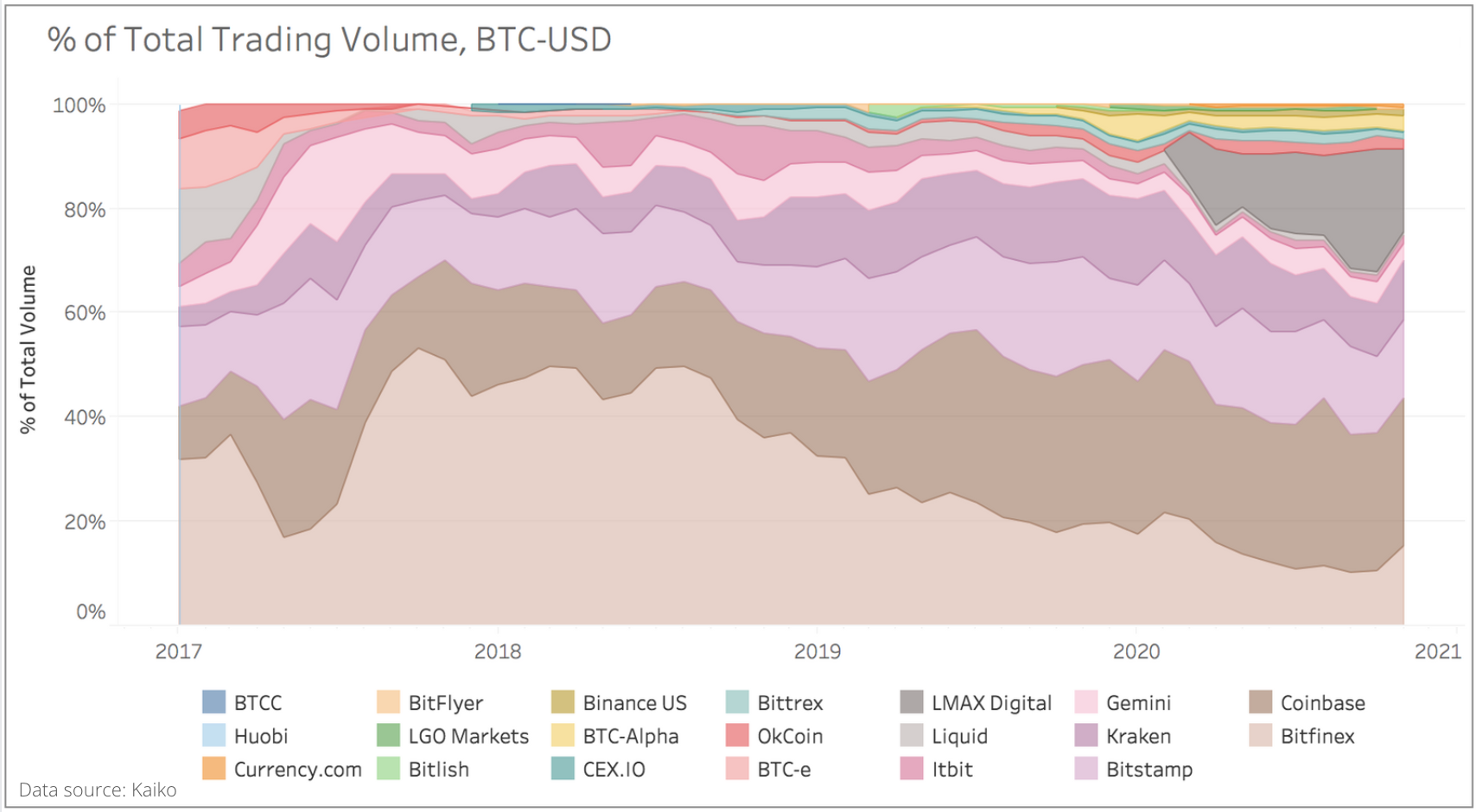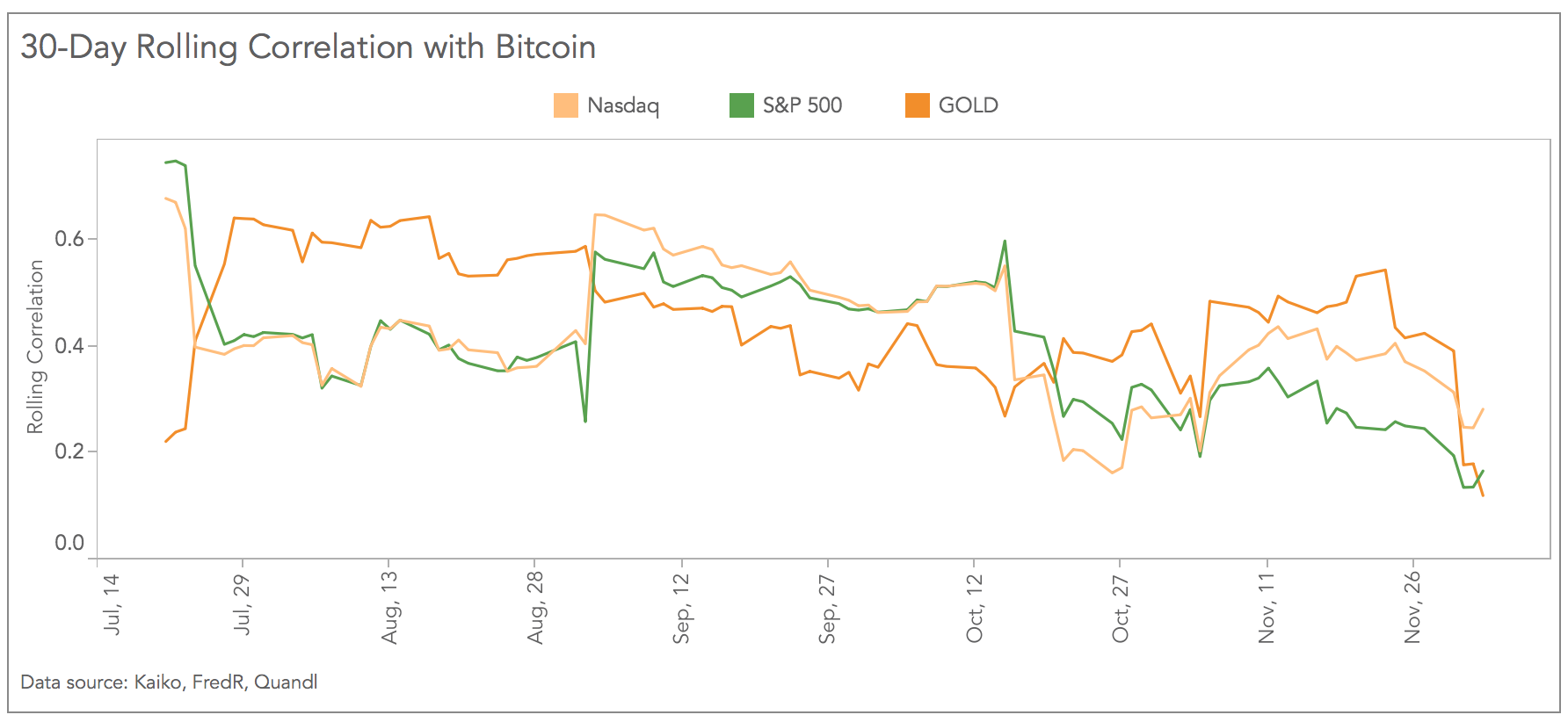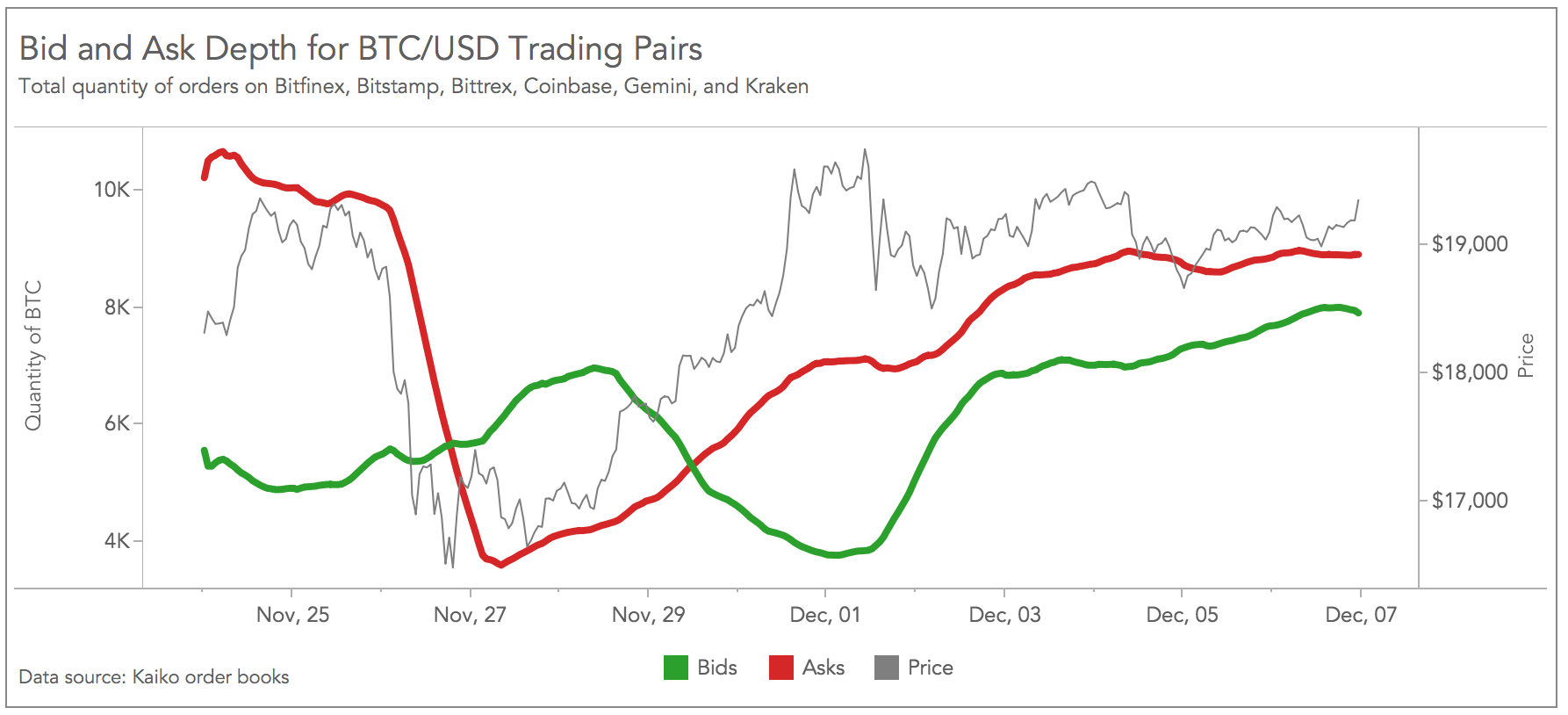A summarizing review of what has been happening at the crypto markets of the past week. A look at trending sectors, liquidity, volatility, spreads and more. The weekly report in cooperation with market data provider Kaiko.
This week in the cryptomarkets:
- Bitcoin had its highest monthly close ever as institutions expressed record-levels of interest in the crypto-asset.
- Bitfinex plays a lesser role in cryptocurrency markets this bull run, compared with 2017.
- Bitcoin's 30-day correlation with traditional financial assets plummeted to a 5-month low.
- Ask depth has grown steadily over the past week as traders place large sell orders, threatening to keep Bitcoin in a range below $20k.
Institutions flock to Bitcoin

November was filled with positive institutional news, from improvements in usability (PayPal's launch of crypto trading) to increased institutional investment (Grayscale's growing AUM) to markings of a general shift in sentiment (Alliance Bernstein's praise of Bitcoin). This past week alone, the CEO of BlackRock acknowledged that Bitcoin could "evolve" into a global asset and New York Digital Investments Group raised $150 million for two new crypto funds. These events are far from insignificant, and show a genuine transformation in how the traditional financial industry perceives Bitcoin.
Market dominance shifts away from Bitfinex
Coinbase has become the dominant market player this bull run, compared with 2017 which saw Bitfinex claim the largest percentage of BTC-USD volume. LMAX Digital, an exchange catering to institutional traders, is the most promising newcomer, at one point this year grasping more than 20% of all BTC-USD volume. Bitstamp and Kraken's market share has remained steady, while Gemini's has fallen.
Bitcoin's correlation to traditional assets plummets
While equities reached new all time highs this week (in the midst of the worst days of the pandemic recorded), their growth has not matched Bitcoin's current bull run. Gold and the S&P 500 are at their weakest correlation with Bitcoin since the summer. For a brief moment, Bitcoin's correlation with gold and equities strengthened consistently, but this week proves what we have known for years: Bitcoin has no consistent correlation to any traditional asset, which is ultimately a good sign in times of macro uncertainty.
However, Bitcoin's one consistent (inverse) correlation over the past few months has been with the U.S. Dollar index. The Dollar has weakened considerably against a basket of foreign currencies as inflation fears grow in the United States. A weakening Dollar has historically benefitted Bitcoin because the crypto-asset is perceived as an inflation-resistant hedge, which is attractive to investors.
Ask depth climbs as Bitcoin approaches $20k
Over the past two weeks, the volume of sell orders on Bitcoin's order books has doubled. Most of the sell volume is placed between 2-6% of the midprice, near the $20,000 price level. This has effectively created a sell wall which would prevent Bitcoin from surpassing $20k unless sellers relent. Bid depth has also increased over the past week as Bitcoin consolidates in an increasingly tight range.







